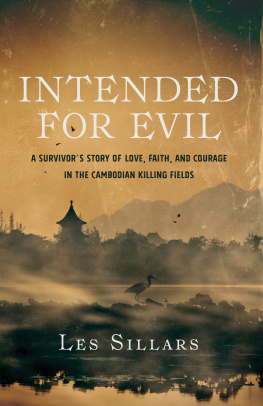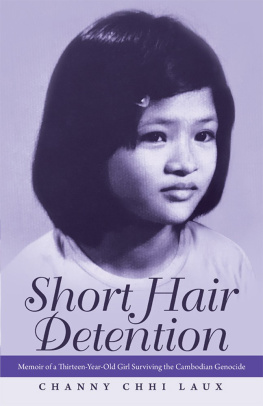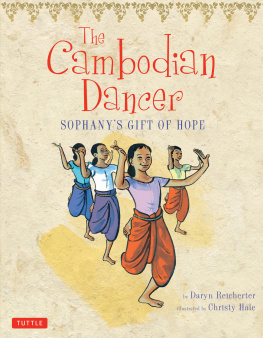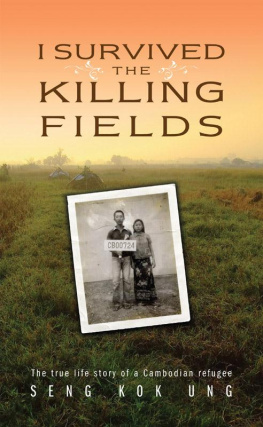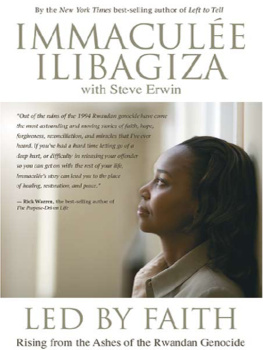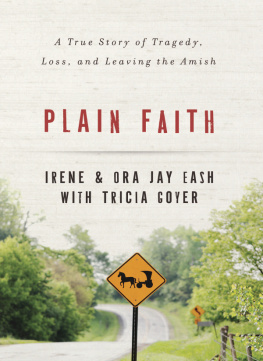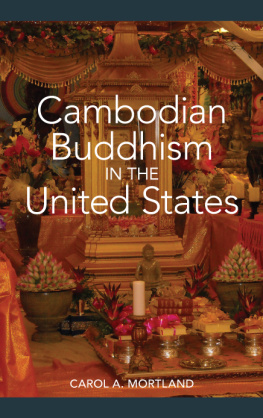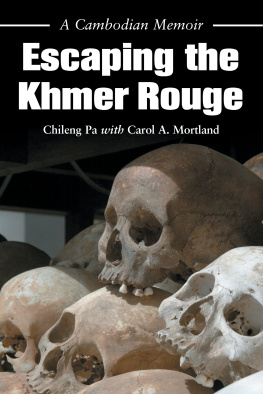P.O. Box 6287, Grand Rapids, MI 49516-6287
All rights reserved. No part of this publication may be reproduced, stored in a retrieval system, or transmitted in any form or by any meansfor example, electronic, photocopy, recordingwithout the prior written permission of the publisher. The only exception is brief quotations in printed reviews.
Library of Congress Cataloging-in-Publication Data is on file at the Library of Congress, Washington, DC.
Scripture quotations are from the Holy Bible, New International Version. NIV. Copyright 1973, 1978, 1984, 2011 by Biblica, Inc. Used by permission of Zondervan. All rights reserved worldwide. www.zondervan.com
Endorsements
Thoroughly researched and beautifully written, Intended for Evil blazes with vivid detail. Sillars had me at hello.
Lynn Vincent , New York Times bestselling author of Same Kind of Different as Me and Heaven Is for Real
Single death: tragedy. Million deaths: statistic. Sometimes attributed to Joseph Stalin, sometimes to others, that formula certainly holds true for writing about the Khmer Rouges murder of 1.7 million Cambodians. So Les Sillars was wise to tell the story of one man, Radha Manickam, and his journey through Communist hell during the 1970s. Its also a tale of coming to Christ and surviving through Gods grace. If you want to understand that era, Intended for Evil is a great book to read.
Marvin Olasky , editor-in-chief of World
The Khmer Rouges murderous regime in Cambodia was one of the worst events in human history and perhaps the purest Communist revolution the world has ever seen. And yet we know very little about it. Intended for Evil is the remarkable and intimate story of a man who miraculously survived the Khmer Rouge and later returned to Cambodia as a missionary. His story of faith in the midst of suffering, torture, and the now infamous killing fields will leave you stunned.
William J. Bennett , former secretary of education, bestselling author, and host of The Bill Bennett Podcast
Intended for Evil is one of the most compelling stories I have read of life under the tyrannical despotism of Cambodias Communist rulers, the Khmer Rouge. From 1975 until 1979, when the Vietnamese invasion brought the downfall of the regime, Radha Manickam experienced the brutal public murder of commune members who displeased the Communist cadres, cynical political deception, constant surveillanceoften literally by childrenand a complete suppression of normal human relations.
Most extraordinarily, Radha experienced a compulsory marriage to another prisoner who might have caused his death had she reported his Christian faith to the authorities. In an astonishing example of Gods miraculous providence, his bride turned out to be a Christian, and the two of them endured a harrowing few years surviving first the Khmer Rouge and then the brutal uncertainties of Vietnamese rule over Cambodia.
In Intended for Evil , Les Sillars has drawn an astute and vivid portrait of a young man encountering one of the most wicked political regimes of all time. It is an exceptional book.
David Aikman , former Time correspondent and author of One Nation without God?
Intended for Evil reads like a gripping novela thriller, a totalitarian dystopia, a horror story. But its history, not fiction. Les Sillarss book is also an inspiring account of the resiliency of the Christian faith against the most extreme opposition.
Gene Edward Veith , provost emeritus, Patrick Henry College
Dedication
To Radha and Samen
Contents
Cover
Title Page
Copyright Page
Endorsements
Dedication
Authors Note
Prologue
1. Civil War
2. Talking Theology
3. Two Worlds
4. Streets of Fear
5. The Khmer Rouge
6. Into the Countryside
7. Water Buffalo Island
8. Angka the Idol
9. Dont Let Them Count One
10. A Strange Dance
11. Something Rotten
12. A God of Disorder
13. Super Great Leap Forward
14. Rebels Within
15. The Plan
16. The Other Plans
18. Inevitably, Angka
19. Risking Angkas Wrath
20. A Killing Field
21. Hard Waiting
22. Free Trading
23. Traveling Mercies
24. Church of the Lord Jesus Christ
25. Family Ties
26. Settling in Seattle
27. Home Again
28. Such a Time as This
29.... And of the Holy Ghost
Epilogue
Acknowledgments
Notes
About the Author
Back Ads
Back Cover
Authors Note
Y ou should call this guy, David Aikman told me in the fall of 2013. We were in a hallway at Patrick Henry College, where we both taught. David, a senior Time correspondent for many years, had heard from mutual friends an incredible tale about a Cambodian Christian who had survived the Khmer Rouge in the late 1970s. According to David, this person wanted someone to write down his stories. He passed along the email address of one Radha Manickam of Seattle.
As my knowledge of Pol Pot and the Khmer Rouge at the time consisted of a hazy recollection of a movie, The Killing Fields , I had no idea where this might lead. But I sent Radha a note, and we set up a phone call. Radha mentioned his forced marriage, the loss of almost all his family, and seeing people murdered. I promised to do some reading and call him back.
I soon realized that the Khmer Rouge regime was one of modern historys greatest catastrophesand one largely forgotten in recent years. I found the Khmer Rouge both horrifying and fascinating. No other government in modern history has killed a greater percentage of its own citizens? The most totalitarian government ever attempted? Torture, starvation, and mass executions? Civil war and bloody revolution? Because of the Vietnam War, the American military was involved in Cambodia and even, said critics, partly responsible? And Radha, then a new Christian and the slightly spoiled son of a wealthy merchant, had lived through it all? Wow.
So in January 2014, I started interviewing Radha; we had long conversations at least weekly for a year. Every time we spoke, he told me something else that made my jaw drop: people sliced open before his eyes, treks through the jungles, unbelievable deprivation, and a faith that survived many doubts and much anger. The story he told was stunning. I hope Ive done it justice.
The human memory is often less than completely accurate, but Radhas story was remarkably consistent with what I was learning in my investigations about life under the Khmer Rouge. For example, when Radha described how the leaders of his village were purged in the summer of 1978 or communal dining areas were instituted in the fall of 1976, I later read in various historical and scholarly studies that, yes, the Central Committee in Phnom Penh had instituted just such a policy around that time.
Radhas story also matched the many memoirs of Khmer Rouge victims; what he described for me corresponded to the experience of many, many other people. He seemed rather reluctant to dwell on the more sensational details, which made him all the more credible to me.
Quotation marks indicate my best attempt to represent accurately the substance and tone of Radhas conversations as he recalled them, but of course the dialogue is not verbatim; obviously, its difficult for anyone to recall exactly what they said thirty-five years ago. Where possible, I confirmed dialogue with Samen or others.
A note on spelling Angka: its also commonly spelled Angkar (pronounced with a silent r), but many of the scholars writing closest to the time of the Khmer Rouge tended to prefer the shorter version, so I went with that.

